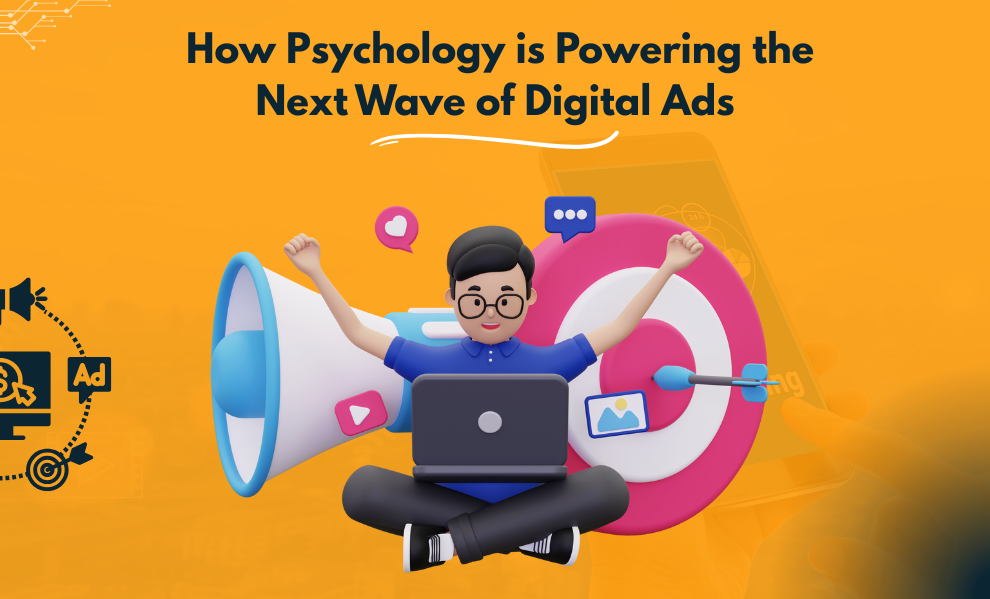Neuromarketing: How Psychology is Powering the Next Wave of Digital Ads
Imagine if you could understand exactly how your customer thinks—what grabs their attention, what emotions drive their buying decisions, and what colors or sounds make them trust your brand.
Welcome to the world of neuromarketing—a powerful mix of marketing and psychology that’s changing how businesses create ads in 2025.
From Coca-Cola’s emotional storytelling to Spotify’s smart playlist suggestions, brands are using neuromarketing to connect deeper, convert faster, and grow bigger.
Let’s break down what neuromarketing in digital marketing means, how it works, and how your brand can start using it too.
What is Neuromarketing?
Neuromarketing is the use of neuroscience and psychological principles to understand how consumers respond to marketing messages. It involves tracking brain activity, emotions, eye movements, and more to discover what really influences buying behavior.
In simple words, neuromarketing helps brands understand what the customer feels, not just what they say.
Why Neuromarketing Is the Future of Digital Ads:
With attention spans getting shorter and ads becoming more competitive, traditional marketing methods aren't enough. Neuromarketing helps marketers:
Trigger emotional responses
Build deeper trust
Improve ad recall and engagement
Make data-backed creative decisions
In 2025, this is no longer a trend—it’s a strategy for smart brands.
Real-World Examples of Neuromarketing:
Here’s how some of the world’s biggest brands are already using neuromarketing techniques:
Coca-Cola: Emotional Branding:
Coca-Cola uses emotional storytelling to create a connection with its audience. Their ads often focus on happiness, friendship, and memories—not just the drink. Studies have shown that emotional ads like these create stronger brand recall and loyalty.
Neuromarketing Tip: Use emotional triggers like joy, nostalgia, or love in your ads to create a deeper bond with your audience.
Spotify: Personalized Recommendations:
Spotify uses AI and user behavior to serve playlists that match your mood. They track listening habits, emotional preferences, and even time of day to suggest the perfect track. This personalization is a form of behavioral neuromarketing.
Neuromarketing Tip: Analyze user data to deliver content that feels tailor-made.
Google: Eye Tracking Research:
Google has used eye-tracking technology to study how users view ads on search results pages. This helps them understand where attention goes first—valuable data for improving ad placement and design.
Neuromarketing Tip: Place important CTAs (Call-To-Actions) where users naturally look first.
How Does Neuromarketing Work?
Neuromarketing tools and techniques include:
Eye Tracking: Tracks where people look first and what holds their gaze.
Facial Coding: Measures emotional reactions to ads using facial expressions.
EEG (Electroencephalogram): Tracks brainwave activity to see which parts of the brain are stimulated.
Biometric Responses: Measures heart rate, skin conductance, and more during ad interaction.
These tools help marketers design better visuals, choose the right words, and create campaigns that resonate on a subconscious level.
How to Use Neuromarketing in Your Digital Strategy:
You don’t need a neuroscience lab to use neuromarketing. Here’s how you can start:
1. Focus on Emotional Triggers
Use visuals, colors, and storytelling that evoke emotions. Red for excitement, blue for trust, green for calmness.
Example: A wellness brand can use soft colors and peaceful imagery to trigger a sense of calm.
2. Personalize User Experiences
Use customer data to segment and personalize your ads. Personalized emails, ads, and landing pages increase engagement and conversion.
Example: An eCommerce brand offering "Your favorites are back in stock" triggers familiarity and action.
3. Optimize for Eye Movement
Place your call-to-actions in the top left or center of your design where users naturally look first.
Example: A fashion brand can place "Shop Now" next to the product image, aligned with the user's gaze.
4. Simplify Decision-Making
Too many options can overwhelm users. Use the "paradox of choice" principle by limiting product variations or guiding them through filters.
Example: A subscription service offering three plans, with the middle one highlighted as “most popular.”
5. Use Social Proof and Urgency
Phrases like “Only 3 left” or “Join 10,000+ happy customers” use psychological triggers to drive action.
Final Thoughts: Neuromarketing is Here to Stay
The future of digital advertising in 2025 is not just about flashy graphics or catchy lines—it’s about understanding the brain behind the buyer.
By using neuromarketing strategies, your brand can:
Improve ad performance
Build emotional connections
Increase conversion rates
At Digiink Solutions, we specialize in creating psychology-powered ad campaigns that speak directly to your audience’s emotions and behaviors.
Ready to tap into the power of neuromarketing? Contact us today for a free strategy session.
